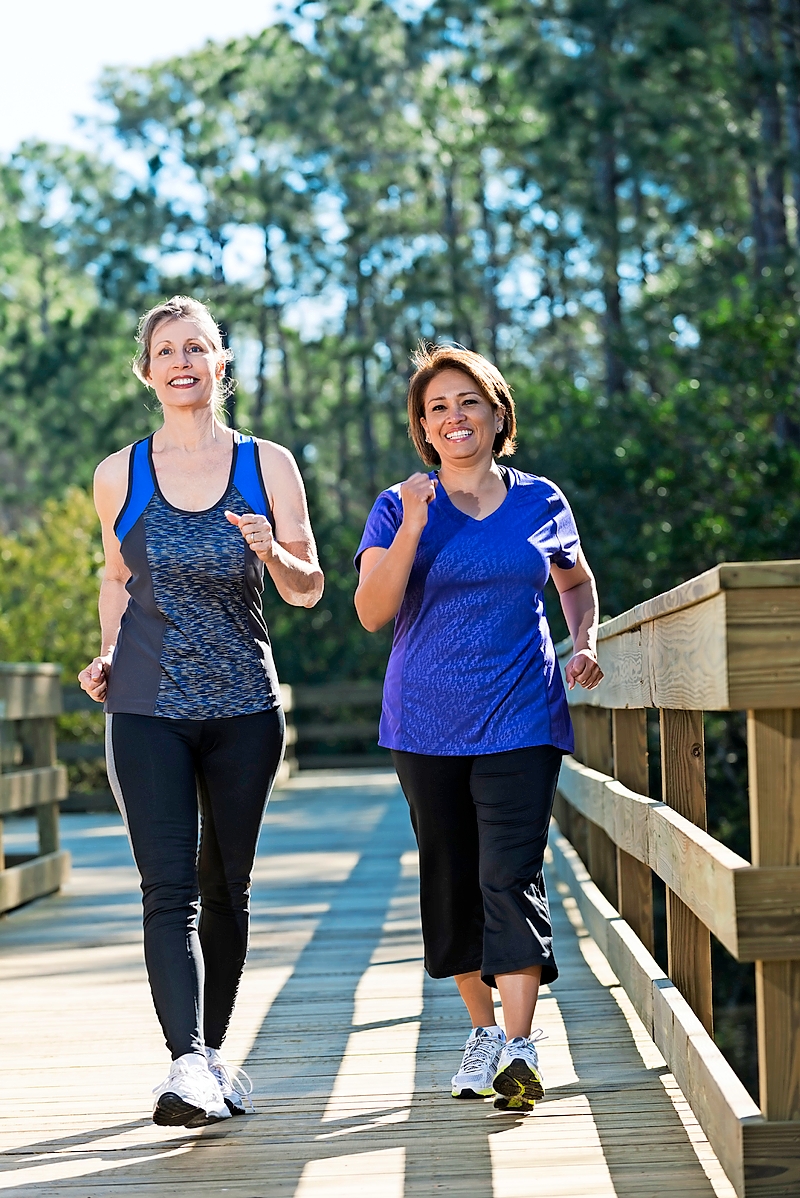Walk Your Way Into Fitness—A Step-By-Step Approach to Better Health
By Mary Kay Kleist
View more Health & Fitness
 Not a runner? No sweat. Walking will work wonders for your body. And if you take it up a notch and increase the pace and intensity, that’s even better. Think casual walking with an attitude. Your body will thank you in more ways than one. Research shows that regular workouts, such as walking, can reduce depression and help fight against cognitive decline.
Not a runner? No sweat. Walking will work wonders for your body. And if you take it up a notch and increase the pace and intensity, that’s even better. Think casual walking with an attitude. Your body will thank you in more ways than one. Research shows that regular workouts, such as walking, can reduce depression and help fight against cognitive decline.
Fit For All Ages
Whether you’re young or old, prefer indoors or outside, walking works for all ages. “For our youth, it can set the groundwork for a lifetime of good health and help combat the childhood obesity epidemic,” said Carol Teteak, fitness coordinator, Edward-Elmhurst Health and Fitness at Seven Bridges. “In our older years walking serves as a means to enhance the activities of daily living and reduce the risk of falls. Additionally, walking is not as strenuous on the body as other, more intense cardo-exercise options. However, keep in mind that if you are over the age of 40, have recently been inactive, or are concerned about your health, consult a physician prior to starting any activity,” said Teteak.
Health Benefits
Walking is a free and easy way to stay in shape or get back into shape. The American College of Sports Medicine and the American Heart Association recommend participation in a minimum of 150 minutes of moderate intensity physical activity each week. “Walking regularly at a moderate intensity can help improve circulation, resting heart rate, aerobic capacity, VO2 Max, blood pressure, and one’s blood lipid profile, all of which mean your heart, and lungs, are working more efficiently for you,” said Teteak.
There are several significant reasons to lace up your walking shoes especially as the weather gets warmer. “Research shows that regular moderate physical activity significantly contributes to longevity, helps manage weight, reduces blood pressure, controls blood sugar, improves cholesterol levels, and builds stronger, denser bones,” said Teteak.
A Power Boost
A casual walker moves about three miles per hour. If you add power to your steps by focusing on technique and what your upper body is doing, you can pick up the pace to five miles per hour, or even more, and increase the effectiveness. One method to give your walk a boost is to hold your abdominal muscles in and up as if you’re zipping a snug pair of jeans. This tones your stomach and supports your spine. Hold your head high. Tighten your butt. Bend your elbows 90 degrees, close your hands in relaxed fists, and move them in an arc from your waist to your chest, keeping your hands close to your body for maximum impact. This routine will add power to your walking workout.
Improve Your Walking Workout
- Maintain a good pair of walking (or running) shoes that have proper arch and heel support while wearing comfortable clothing that is weather and temperature appropriate.
- Grab a friend, start a walking group or listen to music. All can help pass the time and friends can add an element of accountability.
- Keep track of miles walked or steps taken. Use fitness trackers, smart watches or apps (such as Map My Run or My Fitness Pal) for better tracking and motivation.
- Change your walking route or add challenges to your program. A new path creates fresh scenery while incorporating actions such as a faster pace between stop signs, walking lunges for the length of a sidewalk between houses, or side-step the straight-aways will keep your walk more interesting, fun and demanding.
- Gradually increasing your walking duration or intensity (no more than 10–20 percent every 3–6 weeks) and add strength training into your routine to promote an even greater physiological response.


